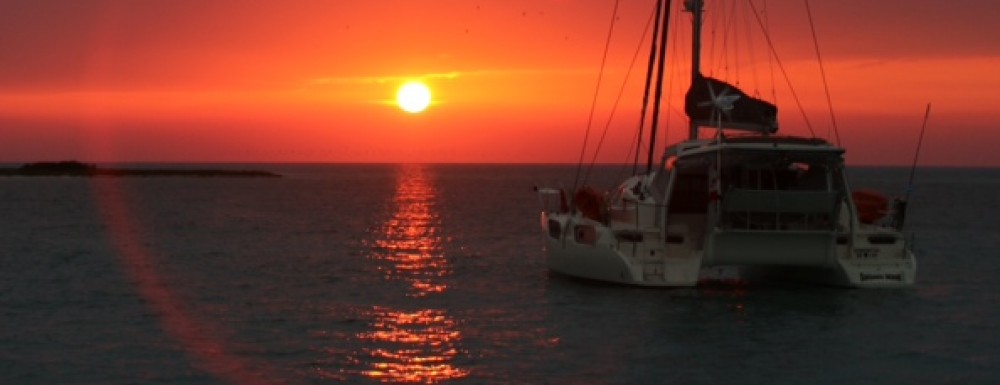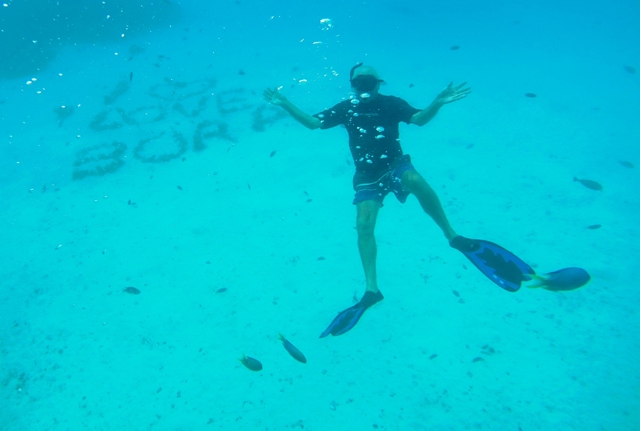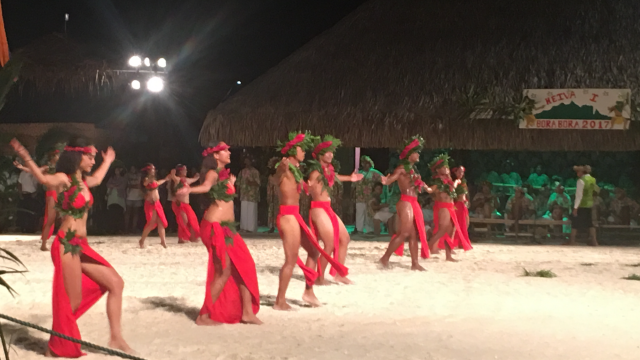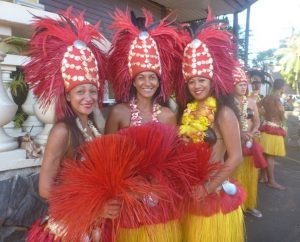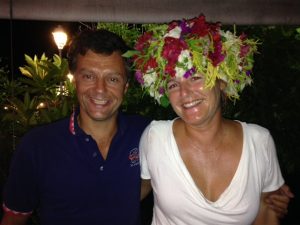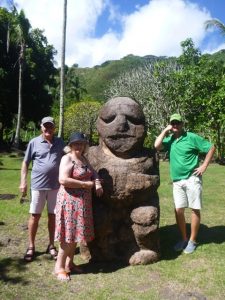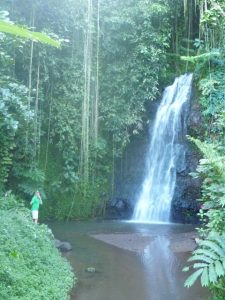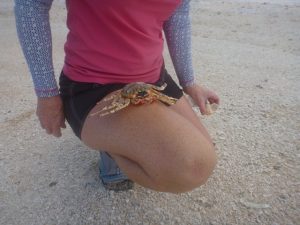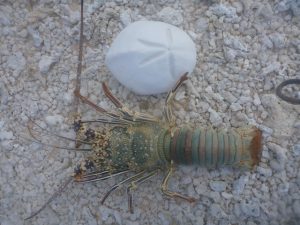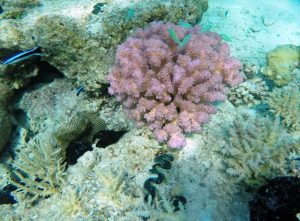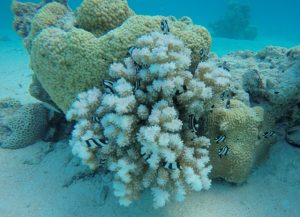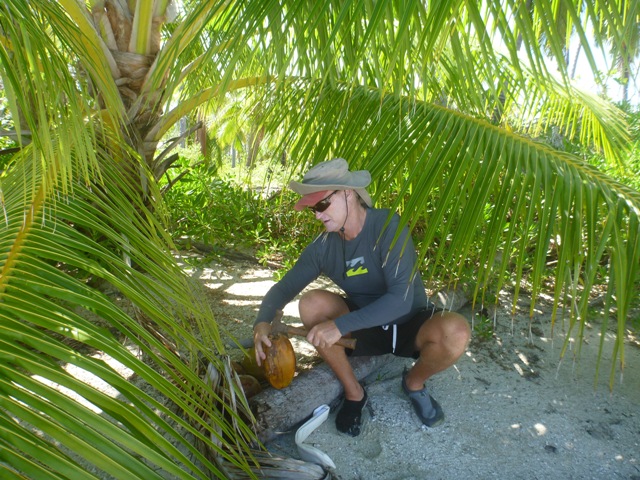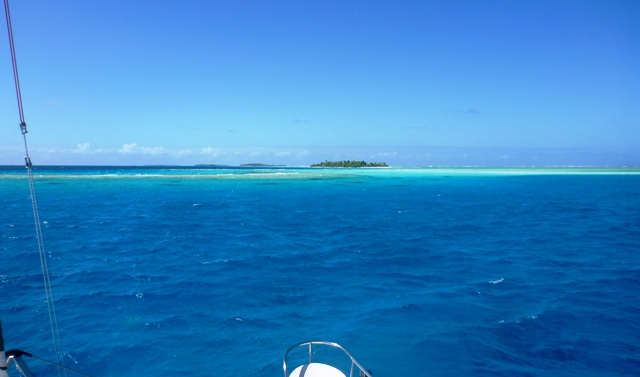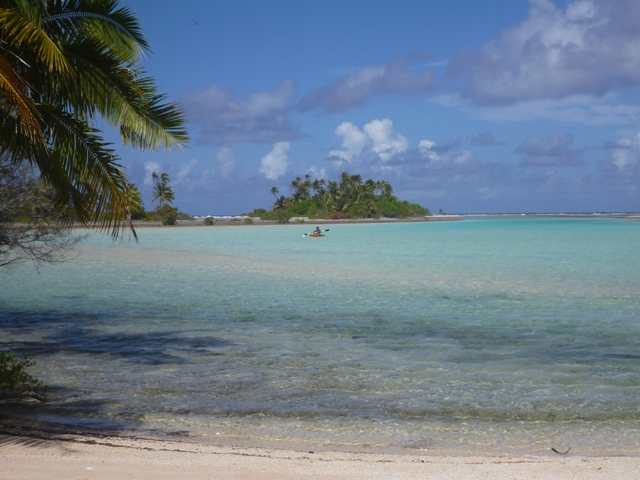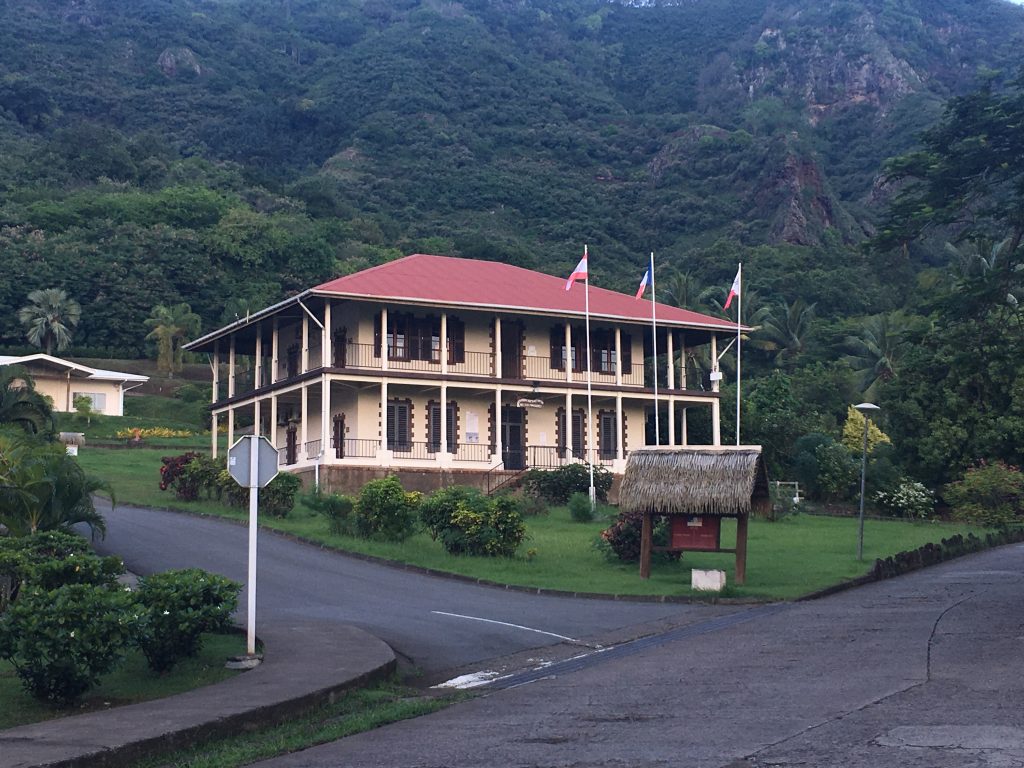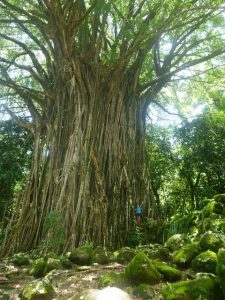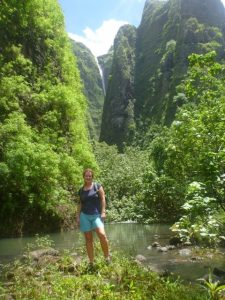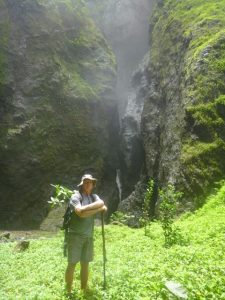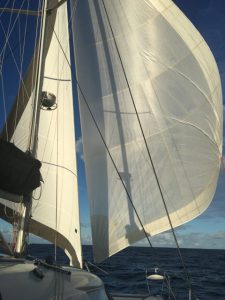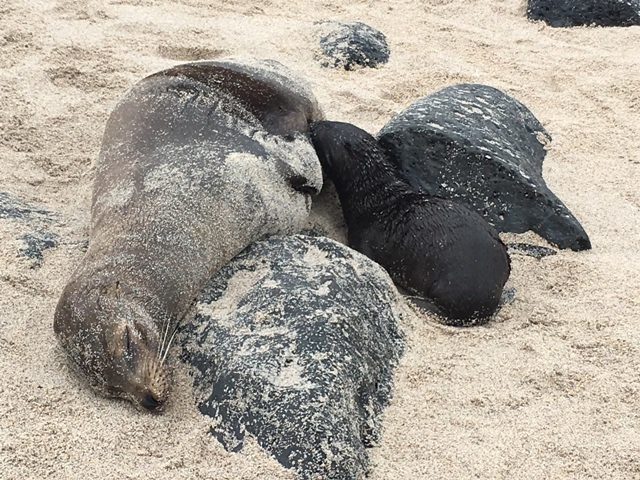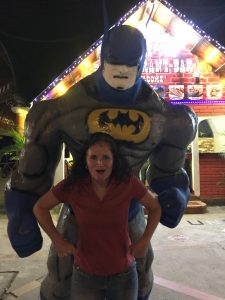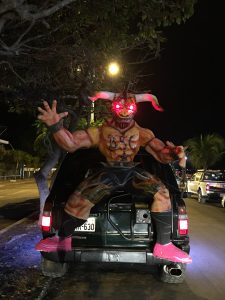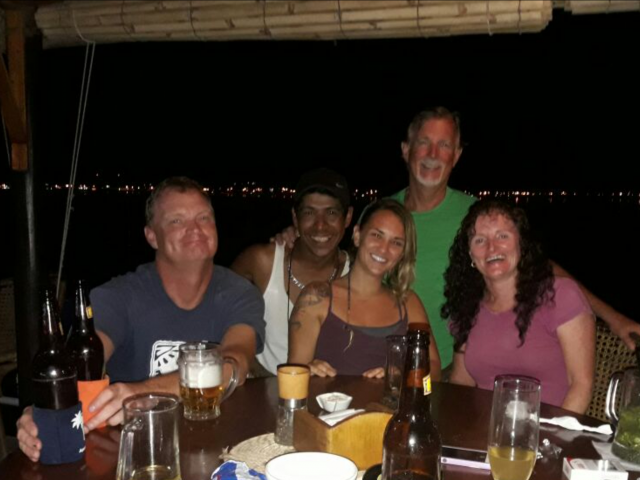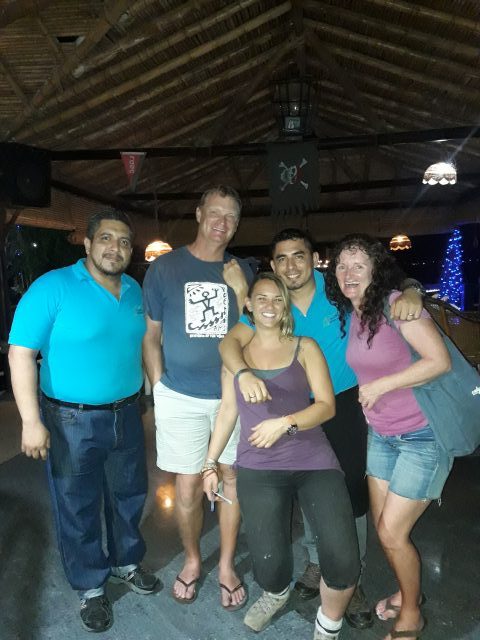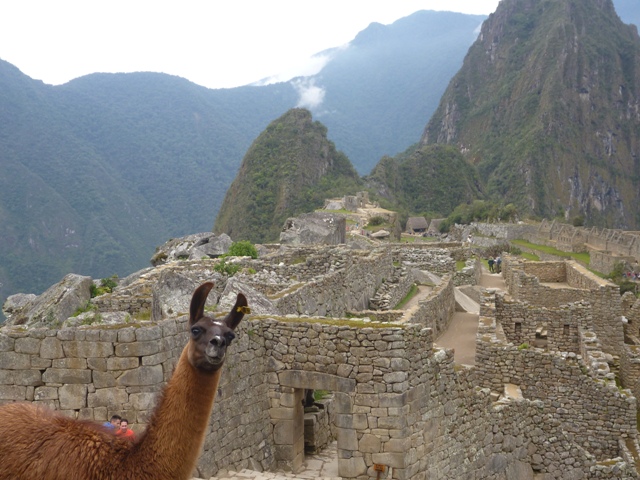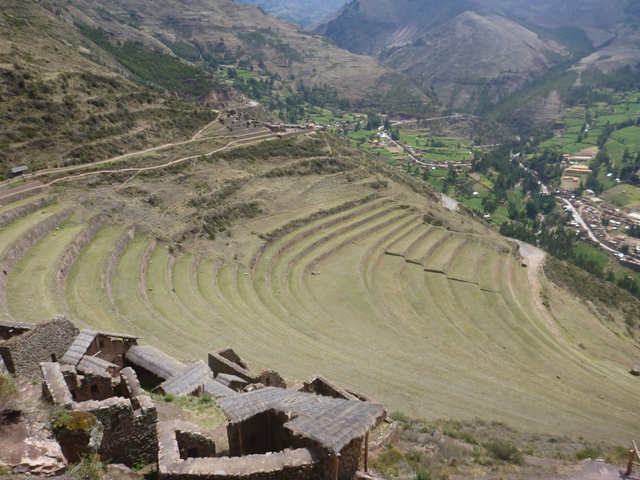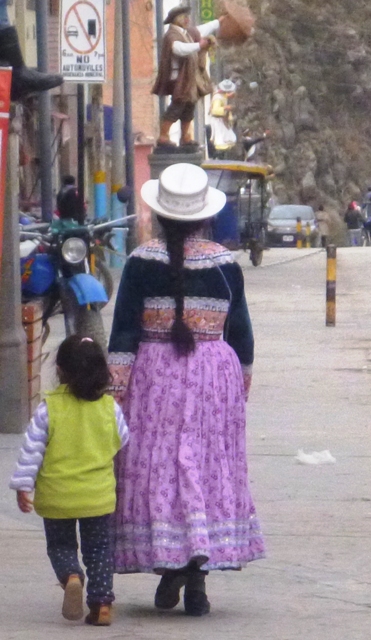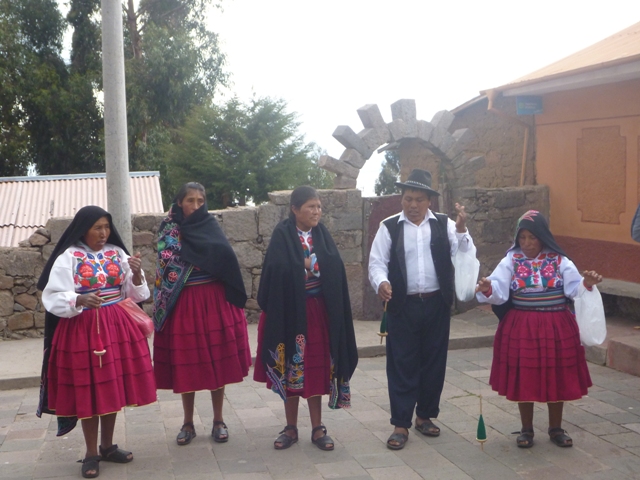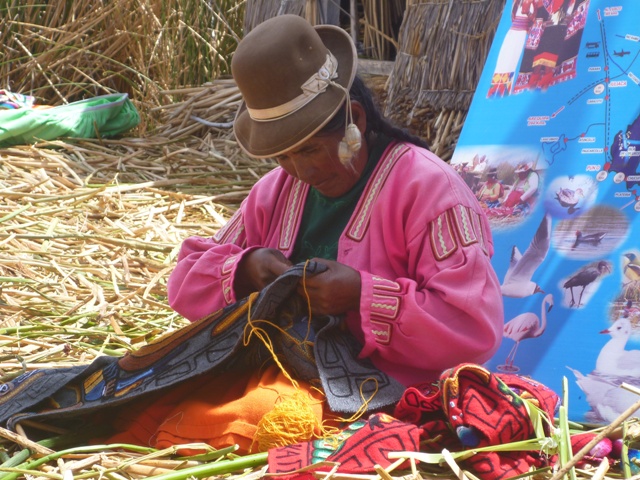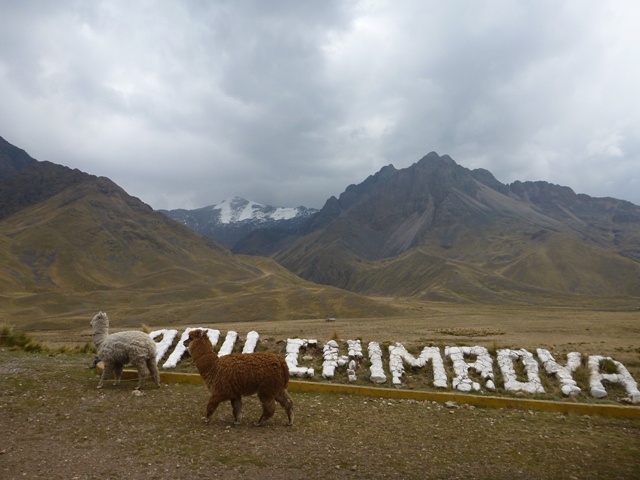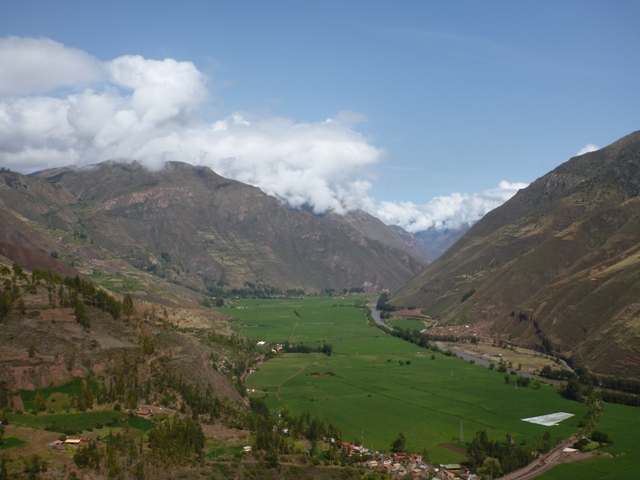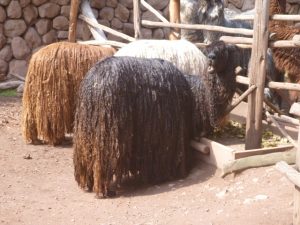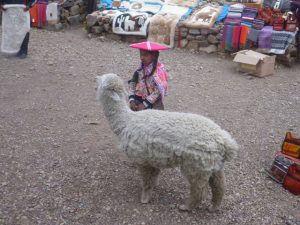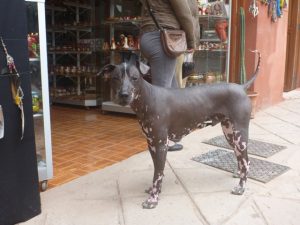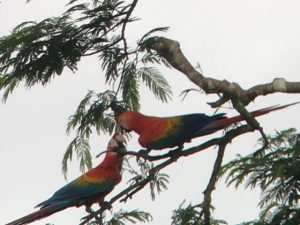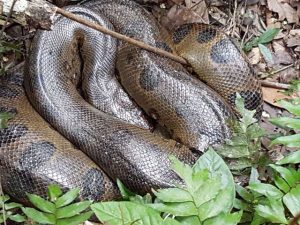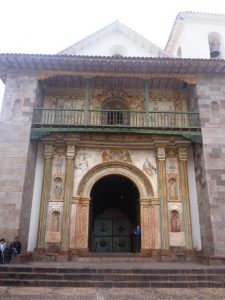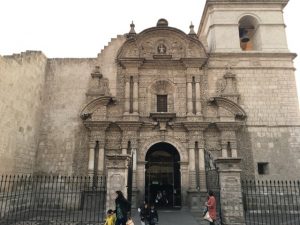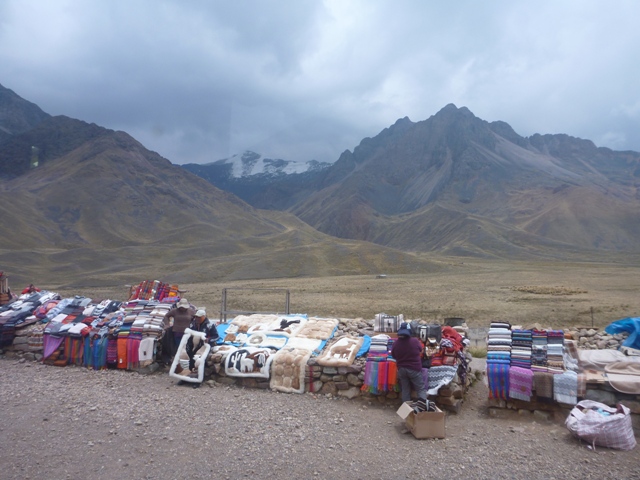Along with friends Aline & Luc from S/V Oceana1 we left for Beveridge Reef arriving at this amazing atoll/ reef in the middle of the ocean.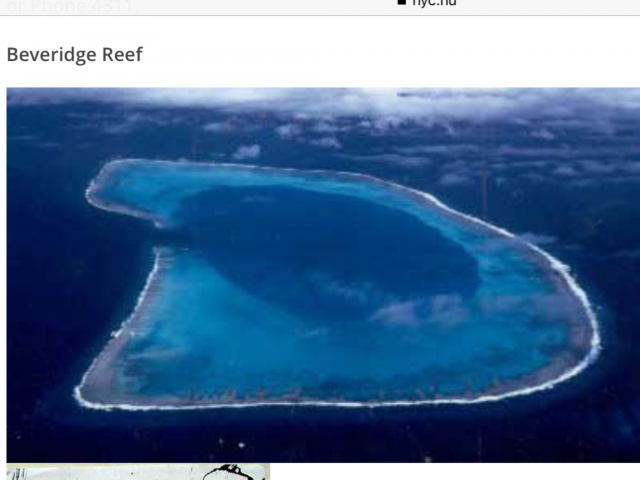 Once inside, it was breathtaking with turquoise and deep blue shades of water and waves crashing onto the coral reef.
Once inside, it was breathtaking with turquoise and deep blue shades of water and waves crashing onto the coral reef.
 No land here just a small fishing boat wreck where a boobie rested when we weren’t bugging him. Snorkeling the coral heads near the entrance was a treat with lots of large reef fish who were very friendly and the odd shark lurking.
No land here just a small fishing boat wreck where a boobie rested when we weren’t bugging him. Snorkeling the coral heads near the entrance was a treat with lots of large reef fish who were very friendly and the odd shark lurking.
 We only had just over 10 knots of wind but at high tide there was a chop in the lagoon, which made it very rolly even for us on a catamaran. Special place to stay but it was onward bound to Niue with a good weather window and time for more fishing. The pacific has been pretty good at feeding us.
We only had just over 10 knots of wind but at high tide there was a chop in the lagoon, which made it very rolly even for us on a catamaran. Special place to stay but it was onward bound to Niue with a good weather window and time for more fishing. The pacific has been pretty good at feeding us.
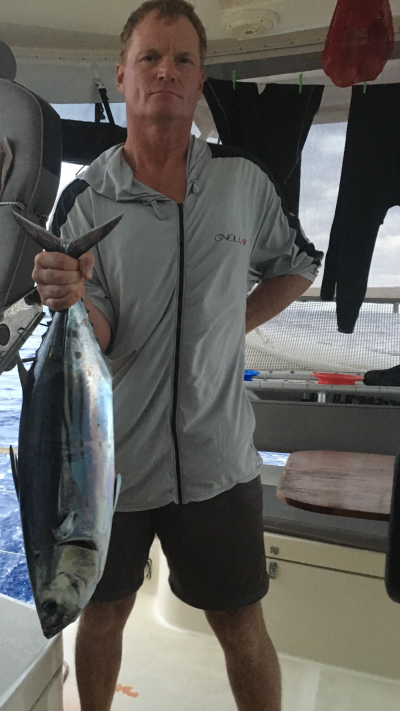
Relaxing in Aitutaki, Cook Islands
After approx 500 nm, catching 3 tuna and having a whale surface right beside us we arrived into Aitutaki with its shallow narrow pass and small harbor basin. We anchored in a small channel towards the reef until space in the harbor freed up allowing us to tie stern to a few coconut trees, making it a lot easier to get ashore and do things.
 The Cook Islands is closely tied to New Zealand (NZ) and you definitely see it in the food, accents, currency and culture. After being in French Polynesia it was strange meeting the Islanders whose language is Cook Islands Maori but almost everyone speaks English with a New Zealand accent. Checking in was very easy but a lot more expensive that we thought it was going to be. In NZ$s: $20 to biosecurity (and fresh fruit & vege removed from boat) $25 to health, $57 to customs, $69/ person to immigration and a $5/night anchoring fee. Oh well we’re in the islands, Time to enjoy!
The Cook Islands is closely tied to New Zealand (NZ) and you definitely see it in the food, accents, currency and culture. After being in French Polynesia it was strange meeting the Islanders whose language is Cook Islands Maori but almost everyone speaks English with a New Zealand accent. Checking in was very easy but a lot more expensive that we thought it was going to be. In NZ$s: $20 to biosecurity (and fresh fruit & vege removed from boat) $25 to health, $57 to customs, $69/ person to immigration and a $5/night anchoring fee. Oh well we’re in the islands, Time to enjoy!
Aitutaki is a really clean place with colorful homes, well manicured yards and small communities dotted around the island. The population is approx 1500 and we found everyone very friendly and relaxed waving out or stopping to say hello. We loved seeing Grandma driving a scooter waving to us as she went by.
Our bikes once again came in handy for getting out and seeing the island & lagoon and going for lunch at some of the hot spots around the island. With it taking us 1.5-2 hours to get around the main road of Aitutaki on relatively flat roads it was good exercise every day.
At night you can hear the drums beating up the hill as they practice for the various island dances scattered around the resorts. We went to Temanu Beach Resort on Thursday night for their Island fire dance, which was good fun.
 Friday afternoons all the local rugby teams arrive to play and with the field being right beside the harbor basin we could wander over to watch the action. Long time since we have seen live rugby.
Friday afternoons all the local rugby teams arrive to play and with the field being right beside the harbor basin we could wander over to watch the action. Long time since we have seen live rugby.
 Kevin & Pam from Cambridge, NZ were on holiday and we ran into them all over the island. They wondered who these crazy people were traveling on a boat so we invited them over for cocktails aboard. I think they left very happy knowing they are and will remain “landlubbers”.
Kevin & Pam from Cambridge, NZ were on holiday and we ran into them all over the island. They wondered who these crazy people were traveling on a boat so we invited them over for cocktails aboard. I think they left very happy knowing they are and will remain “landlubbers”.
 We met Greg & Ingrid from NZ who live in Aitutaki for non cyclone season. They invited us over for drinks, great stories and ceviche on their balcony. Yum! We then reciprocated and also met their NZ friends Ida & Chris. Kiwis are just so friendly and it’s nice to be back in this part of the world.
We met Greg & Ingrid from NZ who live in Aitutaki for non cyclone season. They invited us over for drinks, great stories and ceviche on their balcony. Yum! We then reciprocated and also met their NZ friends Ida & Chris. Kiwis are just so friendly and it’s nice to be back in this part of the world.
Our friends Aline & Luc from S/V Oceana1 arrived so we couldn’t resist taking them to the Heineken store for NZ “Dads Pies” and Tip Top Ice-cream to catch up. Very tasty NZ treats!
 Sundays are a day of rest with the various churches being the busiest places in town and everyone dressing in their best clothes and hats. Sitting in the oldest church (dated 1821) listening to the singing was wonderful as the acoustics was impressive and you could see and hear that these people like to sing.
Sundays are a day of rest with the various churches being the busiest places in town and everyone dressing in their best clothes and hats. Sitting in the oldest church (dated 1821) listening to the singing was wonderful as the acoustics was impressive and you could see and hear that these people like to sing.

 We took the dinghys out to Maina Motu for lunch on the Sunday as town was closed and the lagoon tour companies were not there. It’s a small island with nice white coral sand that you can walk around spotting lots of baby birds about and crystal clear shallow water.
We took the dinghys out to Maina Motu for lunch on the Sunday as town was closed and the lagoon tour companies were not there. It’s a small island with nice white coral sand that you can walk around spotting lots of baby birds about and crystal clear shallow water.
 Off the neighboring motu called Honeymoon we watched kite surfers out enjoying the winds and flat seas. At one point we counted more than 30 kite boarders.
Off the neighboring motu called Honeymoon we watched kite surfers out enjoying the winds and flat seas. At one point we counted more than 30 kite boarders.
 This was definitely a lovely relaxing place to stop with good protection for some strong winds we had. It’s getting time to move on to Beveridge Reef and then Niue before the weather does its full cycle again.
This was definitely a lovely relaxing place to stop with good protection for some strong winds we had. It’s getting time to move on to Beveridge Reef and then Niue before the weather does its full cycle again.
The Society Islands
My parents had come to see the Society Islands with us so off we set visiting 5 islands in this archipelago, all very different from one another.
MAGICAL MOOREA
Moorea is approx 20 miles away from Papeete and is the weekend destination for Tahitians where they leave behind the traffic jams and go to enjoy nature. The landscape is very different with high mountains, valleys with waterfalls & plantations and beautiful scenery.
Opunohu’s Bay is impressive with stunning views up the valley as you enter.
 We hiked to 2 belvederes in the bay to see the views and get some exercise. Both very sweaty hikes up but worth it when you saw the views.
We hiked to 2 belvederes in the bay to see the views and get some exercise. Both very sweaty hikes up but worth it when you saw the views.
Snorkeling from the boat at the Sunken Tiki anchorage we found tikis that have been placed in the clear water near the channel. The coral nearby has a growth all over it and very few fish so real shame.
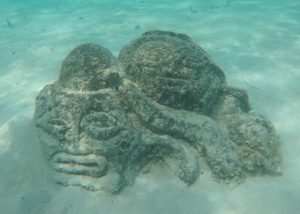
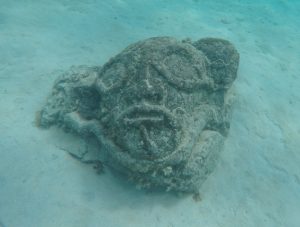
Snorkeling and kayaking in the channel between Coco and Dream Islands had crystal clear water and some coral with a number of different reef fish hiding out.

 Of course we had to visit Stingray City while it wasn’t busy with tourist boats to see. The black tip sharks and sting rays.
Of course we had to visit Stingray City while it wasn’t busy with tourist boats to see. The black tip sharks and sting rays.
WILD HUAHINE
Huahine is 90 miles from Moorea so after a perfect, overnight downwind sail we arrived into the town of Fare early in the morning lucking out and picking up a free mooring off town. It’s a small village so was nice to wander and stretch the legs finishing our afternoon at the Huahine Yacht Club restaurant for a nice cold beer.
 Decided to hire a car to see the sights and was surprised at how big the island was with lush, green wild vegetation.
Decided to hire a car to see the sights and was surprised at how big the island was with lush, green wild vegetation.
Fare Potee had a well restored Marae site which was interesting with a small museum and excellent English information boards.
 The over water fish traps with stone channels to divert the fish were a major provider to secure food in earlier days. People sit in the huts over the water to net the fish. The traps are still being used.
The over water fish traps with stone channels to divert the fish were a major provider to secure food in earlier days. People sit in the huts over the water to net the fish. The traps are still being used.
 As we travelled around the island we saw a number of people busy weaving the fronds from the coconut trees for decoration around trees and at hotels. This man was working hard when we stopped to admire his work.
As we travelled around the island we saw a number of people busy weaving the fronds from the coconut trees for decoration around trees and at hotels. This man was working hard when we stopped to admire his work.
In a stream we found about 30 chunky looking blue eyed eels with what looked like big teeth waiting to be fed. Hmmmm they didn’t need food!

After admiring the views in the various bays along the coast we stopped at Chez Tara’s In Baie Avea for lunch and found out about the Sunday traditional Umu (underground oven) so made a reservation for our trip through the lagoon over the weekend.
We made our way along the inside reef to the SW corner at Baie Avea to enjoy the protected clear water with its stunning shades of blue. Kayaking, swimming, snorkeling and a hike to the hill above us gave us all some good exercise after the huge feast at Chez Tara’s on Sunday.
Snorkeling off the dock at the hotel in Bair Avea had sea anemones and clown fish, something none of us had seen before.

RAIATEA
The downwind sail to Baie Faaroa on Raiatea was approx 20 miles where we took our water convertible up the river meeting Andre, who invited us to see his fruit & vege plantation. He was very generous giving us bananas, papaya, limes etc. We made a few trades with him and we all walked away happy. Fantastic!


TAHA’A
We sailed up the Raiatea coast, which had some very beautiful homes on the shoreline and thru the Grand Bank Central area to an anchorage out on the reef off Taha’a. Time for a swim in our crystal clear swimming pool. Snorkeling out at the reef was OK but not the best we have seen that’s for sure. There’s a plant growth over all the coral bommies here in French Polynesia.
We sailed around the North coast inside the reef to anchor at the coral gardens off Motu Tau Tau. Excellent snorkel where we drifted with the current spotting lots of different colorful fish.
 We saw fish life we have never seen before which was great.
We saw fish life we have never seen before which was great.

 Even an octopus trying to hide from us, good camouflage with the coral!
Even an octopus trying to hide from us, good camouflage with the coral!
PRICEY BUT BEAUTIFUL BORA BORA
After a 20 mile sail we entered the pass following one of the fancy tourist outrigger boats; so different to the large sailing cruise-ship Wind Spirit in the harbor. We dropped anchor off Motu Topua near the Conrad Hotel (ex Hilton) on a nice sandy shelf where Brett & I kyacked thru to see how the other half live. Nice and a price to stay here I’m sure. Cocktails are better on Seismic Wave and no doubt cheaper.
The tourist boats came near the shelf looking for the Manta Ray that has recently made the lagoon here its home. Alas we also missed it but did enjoy jumping in the water on the bank with Sting rays & black tip Sharks lurking around us.
It was then off to the Mai Kai Marina for Internet and a real swimming pool. I met a lady with a drone who videoed and photographed SW at the Mai Kai. Very cool.
You could hear the beat of drums and singing across the bay at night so we went in search to find the locals practicing for Heiva later in the month. Hopefully we see them in full costume when Brett & I return.
The East lagoon was calm with fancy over the water bungalows all along the shores; some with free internet (bonus and yes that’s how I posted this blog). The best was the amazing views over to the Peaks of Bora Bora.
Snorkeling off Motu Piti Uta there were lots of fish who obviously get food from the tourist boats.
The weather was going to turn with a trough coming thru in a few days with some strong SE trades after so we decided it was best to do an overnighter and head back to Papeete sooner so my parents had a reasonable return trip. So it was goodbye to Bora Bora
BACK IN TAHITI AND MOOREA
and hello to a very busy marina in Papeete.
After picking up water maker parts we’d shipped in and some good nights out in Papeete we headed up to Point Venus for a couple of relaxing days watching the ever popular outrigger races from the boat and wandering the black sand beach. It’s a nice spot here.
With nice weather on the horizon we decided to return to Moorea for our last few days for some relaxation on the nice white sand beach, a hike up to the Belvedere (of course in the heat of the day),  some cycling around the Pineapple farms between Cooks Bay and Opunohu Bay
some cycling around the Pineapple farms between Cooks Bay and Opunohu Bay  and a slightly bumpy dinghy ride to Cooks Bay to visit the Fruit Juice Factory and see the spectacular views to the rocky volcanic mountains.
and a slightly bumpy dinghy ride to Cooks Bay to visit the Fruit Juice Factory and see the spectacular views to the rocky volcanic mountains.
Moorea has regular ferries back to Papeete only 25 minutes long so my parents returned to the big city and their awaiting hotel room for a few nights, before returning to NZ. 
For us the winds were perfect for heading to Bora Bora so off we set catching a tuna and wahoo on the way. Yipee! Typical, all my Dad wanted to do was catch a fish and it doesn’t happen till they leave. oh well they had Mahi Mahi and Tuna from our stocks so thats not so bad. 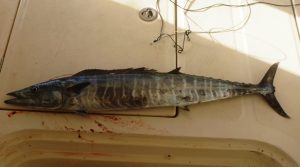 Our last night in Bora Bora was spent going to see Hieva. Wow, great singing and dancing with amazing outfits. Well worth being here when the competition is on.
Our last night in Bora Bora was spent going to see Hieva. Wow, great singing and dancing with amazing outfits. Well worth being here when the competition is on.
Heading to Atutakii, Cook Islands.
Discovering Tahiti
The Downtown Papeete Marina was an excellent place to enjoy all that Tahiti had to offer after the Tuamotus. With lots of restaurants and bars, a nice park to relax, shops and a busy harbor with boats going in every direction we got our fill of city living.
The Polynesian ladies wear flower headwear for celebrations and Sunday mass. We were celebrating Annekes birthday when she was given one by a Polynesian lady for good luck.
Our bikes came in handy once again to get about town BUT your back in a big city with fast cars and lots to see so accidents happen. I ended up laying up for a week while road rash healed. Oh well! Once healed we headed out to Venus Point to relax at the beach, which is popular on a Sunday
 My family came to join us to cruise the Society Islands, which we are heading to next.
My family came to join us to cruise the Society Islands, which we are heading to next.
 We hired a car to tour the 2 islands making up Tahiti and see some of the sights. The road winds along the coast around extinct volcanoes, past seaside villages, marae’s and finally down to Teahupo’o on Tahiti Iti where the famous surfing spot is with a giant wave. The views up at Tahiti Iti’s Belvedere (view) back along the coast was pretty but the sun was setting so alas no photos.
We hired a car to tour the 2 islands making up Tahiti and see some of the sights. The road winds along the coast around extinct volcanoes, past seaside villages, marae’s and finally down to Teahupo’o on Tahiti Iti where the famous surfing spot is with a giant wave. The views up at Tahiti Iti’s Belvedere (view) back along the coast was pretty but the sun was setting so alas no photos.
A giant tiki at Marae Ārahurahu and one of the many waterfalls around the island at Vaipãhī water gardens.
Finishing off with dinner at the Roulotte’s (food trucks)
Now we are off to the Society Islands.
The Terrific Tuamotu Atolls
We left Nuku Hiva after hearing that 50 ARC boats were on their way from Hiva Oa and so with the choice of some 76 atolls in the Tuamotus chain we headed south towards Raroia, the Eastern most atoll. It was a speedy trip with 12-15 knots of constant wind from the East on our beam or forward and flat seas. On the 450nm trip our freezers were filled up on day 1 with 2 good sized tuna. Our arrival at the Raroia pass was right when we thought slack tide was but ahead in the pass was boiling water and eddies and so we powered thru with 4 knots against us; damn!
As the sun was high in the sky we made our way over to the East side of the lagoon passing isolated coral bommies close to the surface and anchored off our very own desert island. Perfect view to wake each morning and see the different shades of turquoise water, white sand beaches and coconut trees beckoning us to visit. Lots of motu’s to kayak to and snorkel back.


The reef and motu walking here was good exercise with all sorts of things to spot. Even picked up some runaway styrofoam pearl buoys on the shores to help keep the anchor chain elevated amongst coral. Works a treat to not get wound around coral.
Underwater life here was a lot better than most places we have been to over the past year. Coral that was alive and colorful, with fish life. We spotted all sorts of reef fish, moray eels and lots of grouper hiding out but there’s no eating these guys as there’s ciguatera here. Of course the black tip sharks were everywhere and curious, following us as we snorkeled.
At one of our anchorages we had a family of Giant Manta Rays who for 4 days in a row would come and play in the shade of the boat. We jumped in the water and watched them do spins right beside us showing their undersides. Seems to be something they like to do and very cool to watch.
We found lots of pretty motu’s on the East side, one being Kon-Tiki island, a tiny motu that became famous when in 1947 Norwegian adventurer Thor Heyerdahl grounded his hand built reed raft on the reef after sailing 4000nm. He was trying to prove that ancient Mariners had possibly come to these lands from South America. The crew all survived and after building a fire on the island were spotted on the western side of the lagoon by the local people, some 8nm away and eventually rescued.
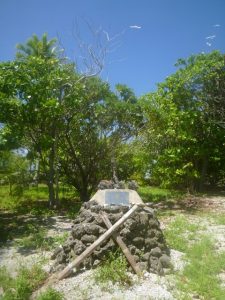
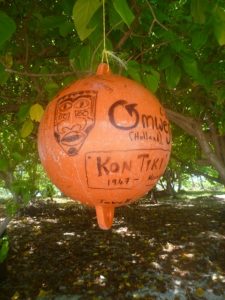
We also anchored past the local Pearl farm so stopped by but were just a few weeks too early to see them busy at work harvesting, cleaning and opening shells to find the pretty black pearl that costs so much in the shops.
Sam showed us around the grounds and took us out to the docks to show us how shells are tied together and strung up for growing. Out in the middle of the lagoon you could see lots of balls where the shells hang below allowing the pearls to grow, for approximately 18 months, till they are ready to harvest. Looks like a lot of work. Pearl farms used to be big business in French Polynesia but has decreased hence the reason there’s now so many abandoned buoys.
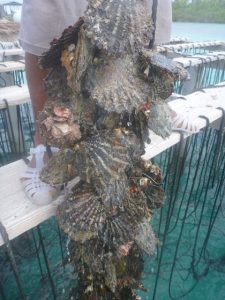
The leisurely overnight sail to Makemo atoll allowed us time to set up to the pass perfectly and then transit thru the lagoon with the sun high above us to a nice anchorage, Punaruku in the middle of the atoll. We used the kayaks to explore the shallow shores and get to places we couldn’t with the dingy and of course get our exercise.


It’s always interesting going ashore to see what you can find. Exploring we stumbled on a private grave yard with lots of headstones dating back to the 1920s & earlier by the look of things.
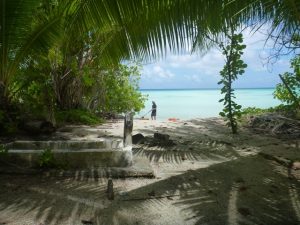
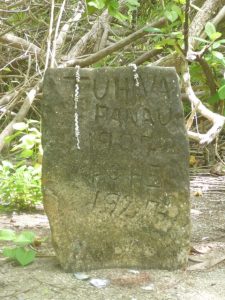
There were some big bommies that we had passed on our way to our anchorage so we returned to snorkel a few and were surprised that they were a lot more alive beneath the surface with plenty of fish life.
Our next atoll was Tahanea , supposedly a marine reserve that is meant to be uninhabited. We first choose an anchorage off a motu in the SE corner tucking in so there was no coral around. On our second day we saw someone walking along the beach with a spear and later returning with fish. Henri had been put on this motu for a month to work getting the copra from the coconuts.
Since we found an anchorage that wasn’t too deep we decided to remove the props, antifoul and grease them. Sailings not all about margaritas and swimming; work has to be done and OK sometimes it’s in paradise. Margaritas after of course.
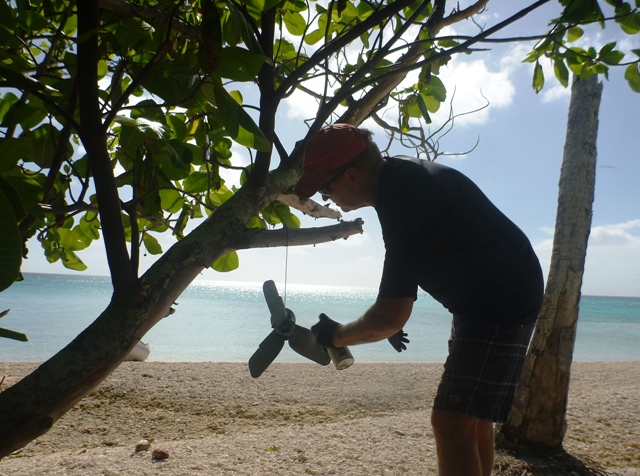
We went out to a nice anchorage at a reef on the SW side of the lagoon. Beautiful setting that’s for sure just tucked behind the reef for wind & wave protection. Over at the closest motu we found a mooring in a channel with lots of fish life and reasonable coral. The best coral seems to be where the current moves giving it nutrients to help it regenerate.
Our highlight here was drift snorkeling the pass with friends we’d met in mainland Ecuador S/V Outer Rim and S/V Spunky. It’s an amazing feeling being transported with the current thru the pass over colorful hard corals along with all sorts of different sized fish. We did this a couple of days as we were lucky and had calm weather.

Our last atoll we visited was Fakarava the second largest atoll at 30 miles long and 10 miles wide. The south pass is well known for its snorkeling and diving and so we were looking forward to drift snorkeling. We definitely were not disappointed gliding over sharks, large groupers, lots of reef fish and hard corals. Lots of days were spent here drifting the pass.



Kayaking to the small community of Tetamanu at the pass, where approx 50 people live on the motu, we found the small church of Maria built in 1862 with its brightly colored mother of pearl altar that had survived a cyclone that destroyed the area. The church is definitely well kept with nice bright colors inside.
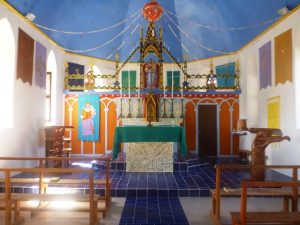
The swimming pool located at the south end of the docks opposite the church was also a good place to enter the pass where we found lots of black tip sharks and 2 huge Napolean Wrasses meandering in the shallows. Making our way out thru the rebar to the pass the coral and fish / shark life was all around us. We went with the current around past the resort and into a bay where we picked up the kayaks and continued drifting back to the boat. Good exercise that’s for sure.

While in Fakarava we had a couple of days with stronger winds which was a little uncomfortable on the mooring so decided to move up to Hirifa at the SE corner of the atoll for a change of scene. Great protection and very pretty. Liza’s snack shack was open so we stopped by for dinners and left some memorabilia on her wall as you do.
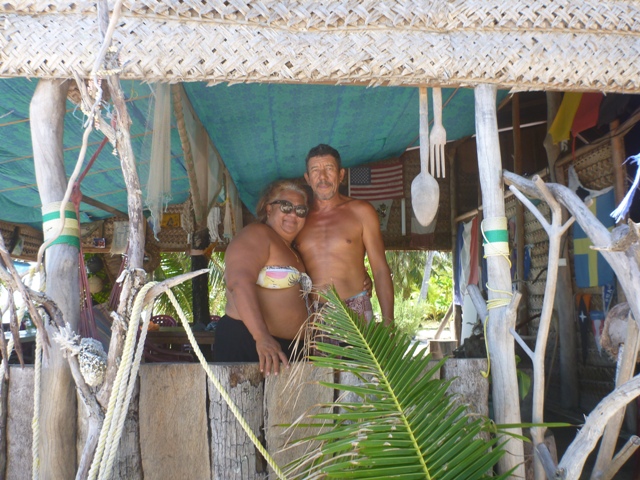
Heading up towards the town of Rotoara there were lots of pretty bays you could anchor in so we took advantage as we had time. Rotoara has the most action we have seen in just over a month with 2 supermarkets, restaurants, 2 churches and a school. The Aranui (a working cruise ship) that supplies some of the islands with fresh produce and goods was anchored off town delivering crates into the quay.
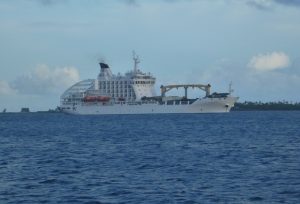
The winds were going to die for a week so we decided we’d take advantage of the winds while they were there to head to the big smoke of Papeete in Tahiti.
So it was goodbye to the Tuamotus and its wildlife.
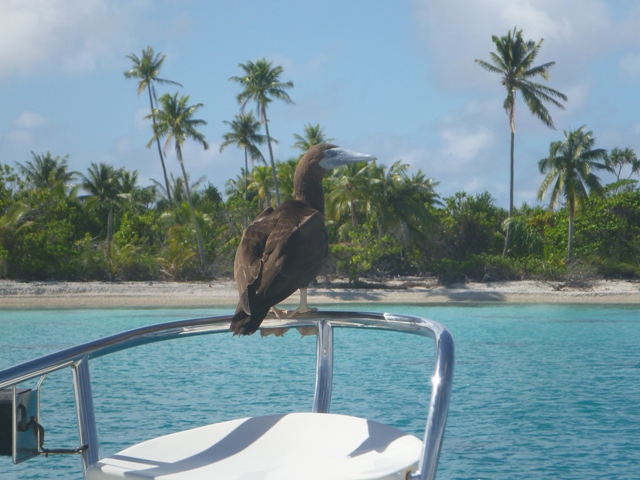
Nuku Hiva, Marquesas
Nuku Hiva is the largest island of the Marquesas archipelago with Taiohae being the administrative capital so was our first stop for checking in. Kevin from yacht services helped sort us out with lots of things, including finalizing the paperwork for our long stay visa so we could stay longer than the 3 months provided for us non Europeans.
The anchorage here is surrounded by lush green volcanic mountains that after a good rainfall sprout waterfalls from the peaks. We hiked out to Pointe Arquée for great views back to town and along the coast spotting manta rays in the water below us.

 The seafront and Main Street for town is a busy area on Saturdays what with it being market day and many of the people from the other villages come into Taiohae for events and socializing. Other than Saturday it’s a quiet clean place with friendly locals who acknowledge you as you walk about town.
The seafront and Main Street for town is a busy area on Saturdays what with it being market day and many of the people from the other villages come into Taiohae for events and socializing. Other than Saturday it’s a quiet clean place with friendly locals who acknowledge you as you walk about town.
While on anchor one day we were entertained by a manta ray who fed close to the boat and then came in beside us to play and do spins showing us his mouth and underside. Very cool.
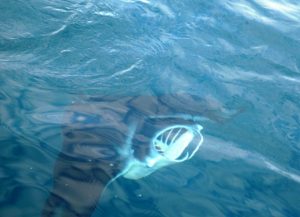
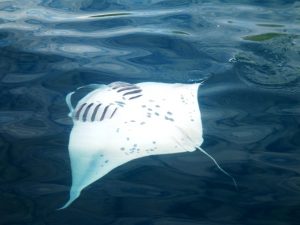 After resting up from our crossing we decided to circumnavigate Nuku Hiva as we’d heard there were some nice bays and we had plenty of time. We moved around to Baie Hakahaa and the village of Taipivai to enjoy a very calm protected bay for a few days and visit the valley which had lots of fruit trees, waterfalls and the Tikipaeke old archaeological site with its stone tikis. Below is the Valley at Taipivai over the Te A’itua tohua site with some new sculpture designs in the field.
After resting up from our crossing we decided to circumnavigate Nuku Hiva as we’d heard there were some nice bays and we had plenty of time. We moved around to Baie Hakahaa and the village of Taipivai to enjoy a very calm protected bay for a few days and visit the valley which had lots of fruit trees, waterfalls and the Tikipaeke old archaeological site with its stone tikis. Below is the Valley at Taipivai over the Te A’itua tohua site with some new sculpture designs in the field.
 It was a 20 minute hike along the road in the shade to the village of Taipivai where we admired all the fruit trees, turning left after crossing the bridge towards Hatiheu where we eventually found a sign to the Tikipaeke site, telling you it’s another 500m up the hill. Easy!
It was a 20 minute hike along the road in the shade to the village of Taipivai where we admired all the fruit trees, turning left after crossing the bridge towards Hatiheu where we eventually found a sign to the Tikipaeke site, telling you it’s another 500m up the hill. Easy!
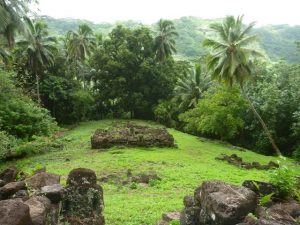
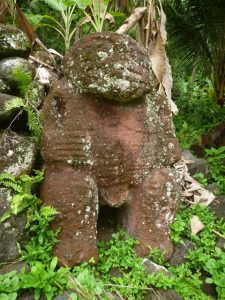
After a squally night and the waters in the bay turning brown from river run off it was time to move on. There were new waterfalls all throughout the valley from all the rainfall.
On our way out of Baie du Contrôleur we spotted lots of manta rays feeding and were escorted along the East coast by 2 groups of different dolphins; 1 with a rounded nose and the other with a bottle nose with a white marking on it. Had a good sail and arrived into Anaho Bay , which was so picturesque with a nice protected bay, a nice breeze and some hiking opportunities. No electricity here for the half dozen families that live here but there is a church.


On one day we hiked around the beach and over to Hatuatua Bay on the East coast to see the rugged windswept beach with dried coconuts galor. A squall came thru which had us high tailing ourselves out as there was no shelter to be found at this beach. The cliffs around here are impressive.
 Decided to hike up the mountain via a horse trail to the town of Hatiheu as we’d heard there were some ancient gathering grounds and petroglyphs. The views at the saddle back to Anaho were impressive.
Decided to hike up the mountain via a horse trail to the town of Hatiheu as we’d heard there were some ancient gathering grounds and petroglyphs. The views at the saddle back to Anaho were impressive.
Hatiheu was a small village that was really clean with a cute church and lots of tiki statues along the beautifully manicured foreshore in town. Also looked like a nice bay.

 We continued up the hill to Hikokua, the site of the public plaza and ceremonial grounds, which had a stunning view out to the basaltic mountain peaks.
We continued up the hill to Hikokua, the site of the public plaza and ceremonial grounds, which had a stunning view out to the basaltic mountain peaks.
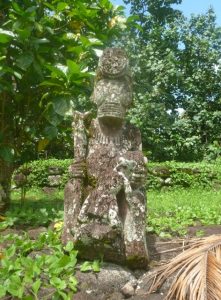
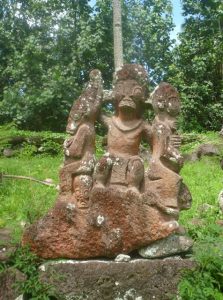
Further up the hill we found the Meae paepae; a platform where human sacrifices were performed, some petroglyphs and a little further up the hill an amazing view back to Hatiheu and the bay.

 A huge Banyan tree at the pae pae, can you see me?
A huge Banyan tree at the pae pae, can you see me?
After making our way along the north coast we came around the NW corner to find a beautiful bay with a nice white sand beach; Baie Haahopu. Our buddie Quinn would love it here as there was no one around but a nice big beach and a trail to the top of the hill. The north coast was perfect to bring our lightweight screecher out.
Our last stop on Nuku Hiva was Anse Hakatea also known as Daniel’s bay for a Marquesan that was good to cruisers but has since passed away. His whole family have houses in both the 2 bays here. Michael, Daniel’s nephew looks after Daniel’s house and property in the Eastern bay which is in such a nice location and no wonder the family come over from Taiohae most weekends. Amazing views all around and so protected.
We hiked from the beach in the Eastern Bay thru the small village of Hakaui passing about six houses and lots of fruit trees through the valley, across rivers and along a nice shady trail to the Viapo Falls, which is the largest in French Polynesia at 350m (1100ft).
It took us 2 hours to get there and was a nice hike with amazing scenery, ancient pae pae sites, tikis ending at a pool at the base of the falls. We even spotted a 5ft eel in one of the rivers we crossed with big teeth! 😳
On return we stopped at Teiki & Kua’s house in Hakaui for lunch and they loaded us up with lots of fruit in exchange for a few things they needed that we had. A lot of the Marquesan men have impressive looking tattoos that look good on them but we be thinking not on us.

 Would be nice to have the whole tree load of bananas but they ripen too fast for us.
Would be nice to have the whole tree load of bananas but they ripen too fast for us.
Time to move on to the Tuamotos after 3 weeks here.
Our Pacific Jump to the Marquesas
Wahhooo! We made it to Nuku Hiva in the Marquesas, 2,981 nautical miles as the crow flies or 24 days and trust us there’s a lot of ocean between the Galapagos and the Marquesas. 🍾🎉 Had a few days where we could go wing on wing with our sails because our course was directly downwind.
What did we do: read lots of books, podcasts, card games, binge watched the “Breaking Bad” TV series, exercise (putting sails up & down with the squalls and wind changes), fishing, pondering life, gazing around at ocean and the night stars, food of course and lots of sleep to make up for our night shifts.
Fish landed: 3 Mahi Mahi, 3 Tuna (sashimi, yum 😊)
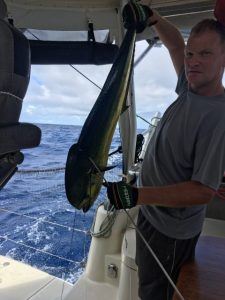
Sightings:
– 1 manta ray with a 15ft beam that swam under the front of our boat, huge!
– 1 whale sleeping on the surface who then showed us his tail and dived
– lots of pods of dolphins
– these small brown birds with a white bum miles from anywhere
– 1 fishing boat within 1 nautical mile of us going the wrong way into some big seas
The weather was on the whole good with squalls typically coming thru after midnight thru into the early mornings. We had to go south of the rhumb line to find wind and it was tight on the wind to get to the SE trades, which when they were there helped us cruise right along. We had wind from every direction including some days with NOTHING! Damn, wasn’t this meant to be a fast downhill ride, ah not this time of year … Oh well we made it, safe & sound with no damages.
Arriving into Nuku Hiva was great, land finally!
Now it’s time to check out French Polynesia’s islands, atolls & lagoons.
Galapagos did not disappoint
After paying the rather hefty fees to our agent to come to the Galapagos, we catered to the 7 men who came aboard to complete paperwork, inspect the contents of our cupboards and dive the hull of SW and were then given the all clear. This is the most expensive place we have ever been to! It definitely didn’t disappoint.
 We had fortified the back of the transoms with plastic netting, which kept the cute sea lions off the cockpit area. They found the back step and after putting fenders there it took them another week to work out they could still wiggle there way under them. Oh well no mess at least. We had 2 regulars which we named Chuck & Darwin.
We had fortified the back of the transoms with plastic netting, which kept the cute sea lions off the cockpit area. They found the back step and after putting fenders there it took them another week to work out they could still wiggle there way under them. Oh well no mess at least. We had 2 regulars which we named Chuck & Darwin.

 On San Cristobel we went on a couple of hikes that didn’t need guides. Yes a lot of activities in the Galapagos require guides. The following are some activities we enjoyed:
On San Cristobel we went on a couple of hikes that didn’t need guides. Yes a lot of activities in the Galapagos require guides. The following are some activities we enjoyed:

1. The walk through the Interpretation Centre gave us lots of info on the history here and then you continued on to Cerro Tijertas to see Charles Darwins statue and the clear bay for snorkeling. The path then went onto Playa Ochoa & Punta Carola for turtles and sea lions galor.
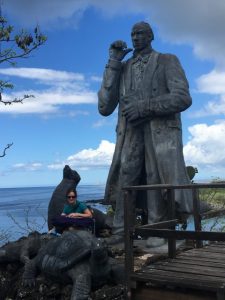
2. Taxi tour ($50) to Laguna El Junco (the only fresh water lake in the Galapagos), Galapaguera (tortoise breeding farm) and on to Puerto Chino with its beautiful turquoise water & white sand beach. After swimming & absorbing the sun we managed to catch a taxi for a couple of $s back to El Junco and cycled back into town.
3. Walked to Playa La Loberia about 50 minutes, for some snorkeling and saw 6 huge turtles hanging out in the bay.
4. Wildlife everywhere; Marine Iguanas, Blue footed boobies, lava lizard, frigate males with their bright red throats, big crabs & of course sea lions galore. These sea lions do have quite the life, playing in the surf, lounging everywhere and anywhere, swimming upside down and chasing each other; great entertainment for us. Snorkeled and kayaked with them which was fun.
We went diving at this stunning rock formation called Kicker Rock ($160 each). The 2 dives were great and we saw lots of different sharks; hammerheads, black tip & Galapogas Sharks, large turtles, sea lions and lots of different fish.



Great quiet anchorage in San Cristobel, but It was time to move onto Santa Cruz. We had heard the anchorage in Puerto Ayora was rolly but we found it reasonably calm; maybe the time of the year we are here. The anchorage is busy as this bay is the main hub for Cruise boats and dive live-aboards who come and go each day. They get to go to more islands and anchorages than we are allowed. Was fun kyaching past these boats in the bay.

The following are some things we did on Santa Cruz:
1. Wandered thru town and out to the trails at the Charles Darwin Centre to see land tortoises and these stunning yellow iguanas. Saw the fish market on the way, which had a good variety and was alive with Pelicans and seals looking for scraps. Fresh fish for dinner.


2. Tortuga Bay is about a 40 minute walk from town along a path that finishes on a beautiful white beach with a lagoon and trees with shade at the far end, to cool off after the walk. Loads of marine iguanas here. Loved the very old cacti trees in bloom.


3. To Las Grietas, a small gorge with 3 small water holes filled with very “refreshing” water where you can snorkel or go swimming.

4. Cycled up past Bella Vista to Tunel de Lava. As the lava flow from a volcano is exposed to open air the flow cools and a crust is formed outside but the molten lava continues to flow under the crust leaving behind a hollow known as a lava tube. The tunnel was huge.

We went diving with Academy Bay Diving Centre, who we’d highly recommend, to North Seymour & Mosquera ($170 each) for 2 dives. We had an amazing time seeing lots of marine life up close and enjoyed good visibility. The sharks swim very close, Wow! Lots of hammerheads & white tip sharks, eagle and spotted rays.



Our last stop was the island of Isabela, which is the biggest island with a beautiful long white sand beach that was nice for a walk. We had a nice protected anchorage behind the Tintoreras reef. Would have loved to kayak here but as its one of the islands tourist spots we weren’t allowed! Hmmmm.
We cycled out to the Wall of Tears, 6km from town where the wall represents the only evidence of a prison camp from 1946 to 1959 where the prisoners were forced to build the wall in this heat. You can walk to the top of the hill above the wall for a view back to town to see how harsh & dry the landscape here really is.
Walked along the boardwalk out to the giant tortoise breeding centre (free), which had all sorts of size tortoises and information about them. The boardwalk is also home to lots of marine iguanas and pink flamingos.
 The most popular tour here is to the Cabo Rosa Tuneles de Lava ($110 each) behind a reef where broken lava tubes form natural bridges and underwater stone tunnels. We snorkeled amongst the formations and saw huge turtles, sea lions, eagle rays, sea horses; something we’ve never seen and sharks sleeping. A treat on the way back was 2 huge mantas near the surface, which we stopped to watch them gliding about, very cool.
The most popular tour here is to the Cabo Rosa Tuneles de Lava ($110 each) behind a reef where broken lava tubes form natural bridges and underwater stone tunnels. We snorkeled amongst the formations and saw huge turtles, sea lions, eagle rays, sea horses; something we’ve never seen and sharks sleeping. A treat on the way back was 2 huge mantas near the surface, which we stopped to watch them gliding about, very cool.


Also went for a 16km hike to Volcán Sierra Negra ($40 each), the second largest crater in the world with a diameter of 7 x 10 kilometers, walking along its rim and down the other side amongst the old volcanic rock to Volcan Chico, which had last exploded in 2005. Amazing terrain that has that sulphur smell and you can feel the heat radiating from some of the collapsed small lava tunnels.
Lastly we wanted to snorkel with the small penguins up close so headed to Concha Perla near the main dock. These guys are only 30cm long and very fast.
We enjoyed the Galapagos. Alas it looks like the officials are going to tighten things up even more for yachties this year. Shame, but then they really don’t want or need us here. Maybe visiting by plane and doing a last minute dive / cruise trip organized in Santa Cruz so you get to more islands to see the wildlife would be the thing. You need guides to do and see the area and those activities are pricey and seem to rise every year, so expect it.
Off to the Marquesas in French Polynesia.
Feliz Año Nuevo, we’re moving on….
We had a great time here at Puerto Amistad, in Bahia de Caráquez, after traveling inland. A few cloudy days and no rain or lightening, so different to Panama, from what we are hearing. 
Audrey & Grant decided to do some travel in Ecuador & Peru as well, so booked a condo up the road near Canoa to celebrate Christmas with us. Definitely enjoyed a few nice sunsets on the balcony, with just a few drinks as you do.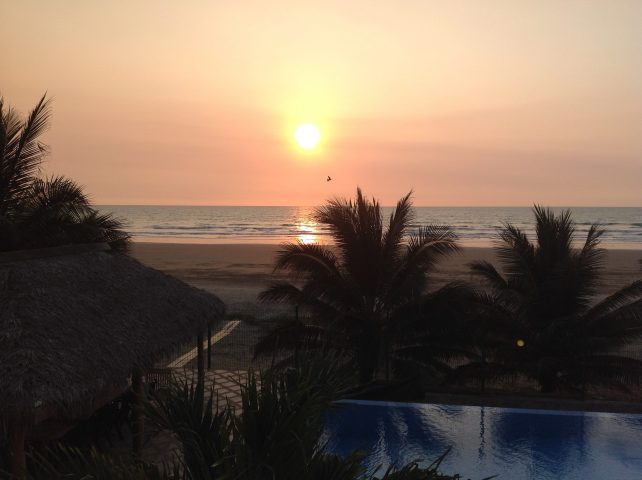
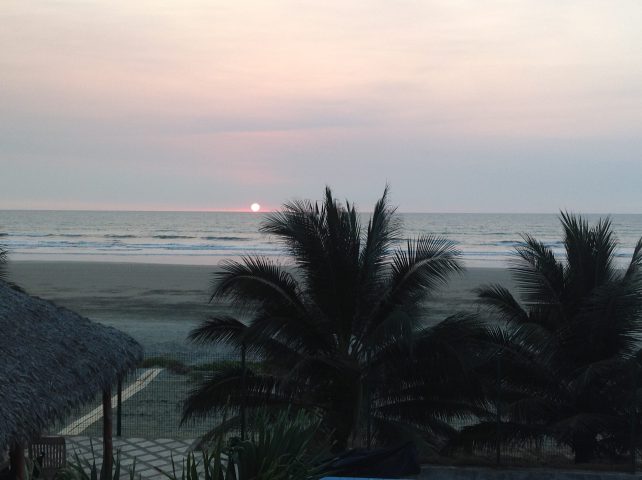
They weren’t used to no snow on Xmas day, but I think they enjoyed the walk on the beach and jumping the waves in the Pacific Ocean. Good times!
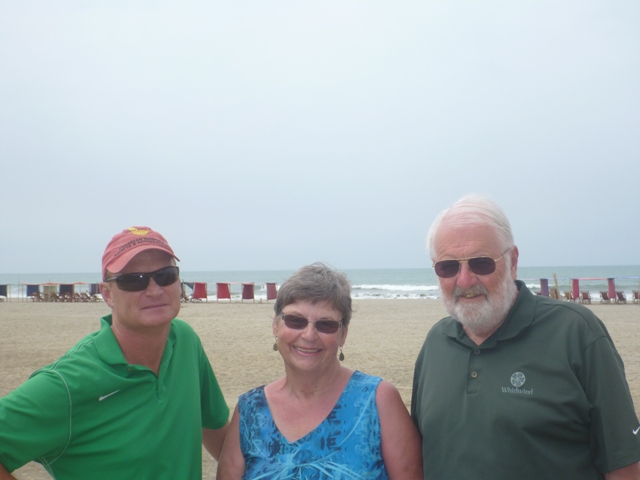
Bahia surprised us with lots of things on for New Years. Fireworks and a free band on the street with lots of people hanging out enjoying it. At midnight people bring their painted effigies of politicians, pop culture figures, and other icons of the year to torch in the streets. They come in all shapes & sizes.
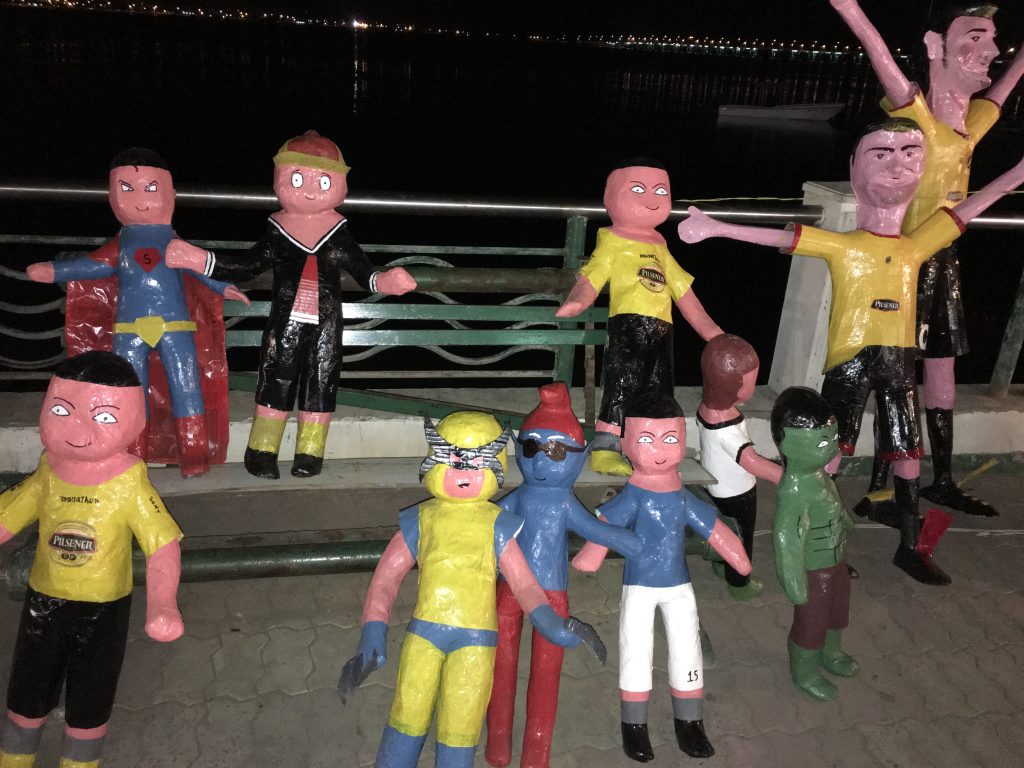
This tradition of burning the “año viejo” (“old year”) is symbolic of cleansing the bad from the previous 12 months before entering the new year. They also light lanterns and send them up over the bay. All very cool to watch.
Got to meet some of the local gringos and the staff, while at Puerto Amistad. As always it’s sad to say goodbye but for us it’s time to move on; we’re on our way to the Galapagos.
Here’s to a happy and prosperous New Year for everyone.
Peru
We arrived into Peru: a country with a population of 31 million and a lot of history dating back to pre-inca times. Tourism has become more popular in the last 20 years after the government was able to control terrorism and political issues within the country. It’s a beautiful country with a lot to see. I really only knew about Machu Picchu so were surprised at what else there was to see and do here.
We came to see Inca ruins and we definitely were not disappointed.
Everywhere there were all sorts of different cultures wearing their traditional clothing; all very bright and vibrant. The clothing indicated everything from where the person was from, what culture they belonged to, if they were single or married etc. Amazing that these people still dress in traditional clothing in their everyday life.
The landscapes varied considerably even within different provinces as we crossed the Andes. Agriculture is the main industry within the country and can be seen both in the lowlands, valleys, high in the rocky Andes Mountains and even the Amazon. You could see these farming people worked hard.
When it came to animals we saw Vicuñas, Llamas & Alpacas in most highland areas around Peru. It’s neat when you see them roaming free up in the hills as opposed to on the side of the road with locals who are looking for money from tourists for a photo. The Amazon had lots of birds and yes a few nasty things.
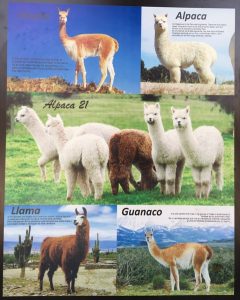
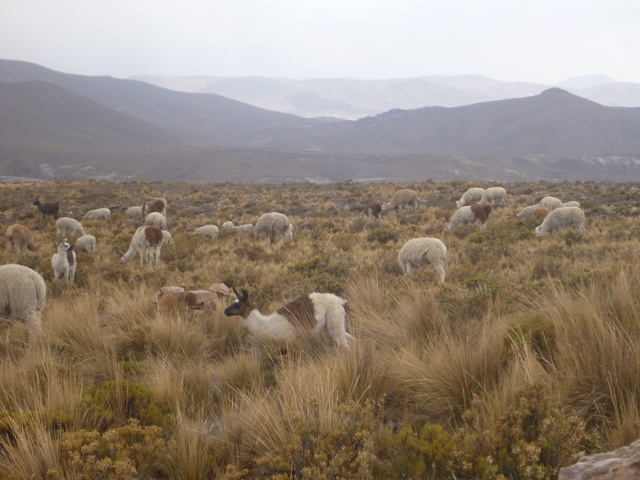
I need a shave! This is an Alpaca Suri.
From the Amazon…..
Most towns had a cathedral that was very significant compared to the homes in the area. Photo below on Left is San Peter cathedral, which was in Andahuaylillas (very rural) on the way to Cusco with amazing murals inside. No photos allowed though.
Photo above right is one of many cathedrals in Arequipa
In the country towns homes were typically constructed of mud or concrete blocks. The homes looked like they were under continual construction and had no construction standards, just people building what they could afford. Generally the smaller towns and cities had electricity while the farming areas and islands had nothing.
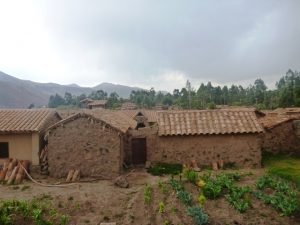
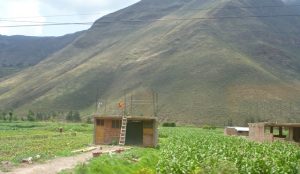
The house we stayed in on Amantani Island, other than having low doors, was very good compared to the mainland.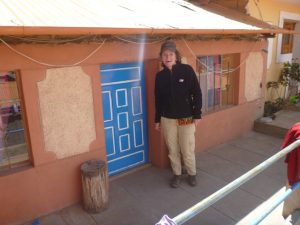
Transport, like any 3rd world country, is very innovative in getting the locals about; anything from 3-wheeled motorcycles to trucks loaded full with people. The road system was actually really good on the whole. Buses were good. Around the Andes’ towns the locals typically walked the many trails high into the hills. Good exercise!
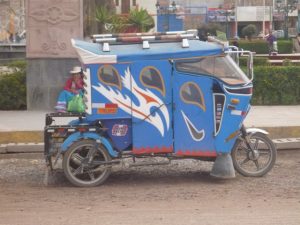
In every town we went to there were souvenir markets and locals selling trinkets and handmade crafts. Interestingly we were told that most of the markets sell acrylic products and tell the tourists its alpaca wool. Who are we to know the difference I guess. Buyer beware! No souvenir shops in the Amazon.
So much to see in so little time and each place we visited was so different. If you are interested in seeing more I have broken the areas we went to in Peru down into a number of separate blog entries. Read on.
